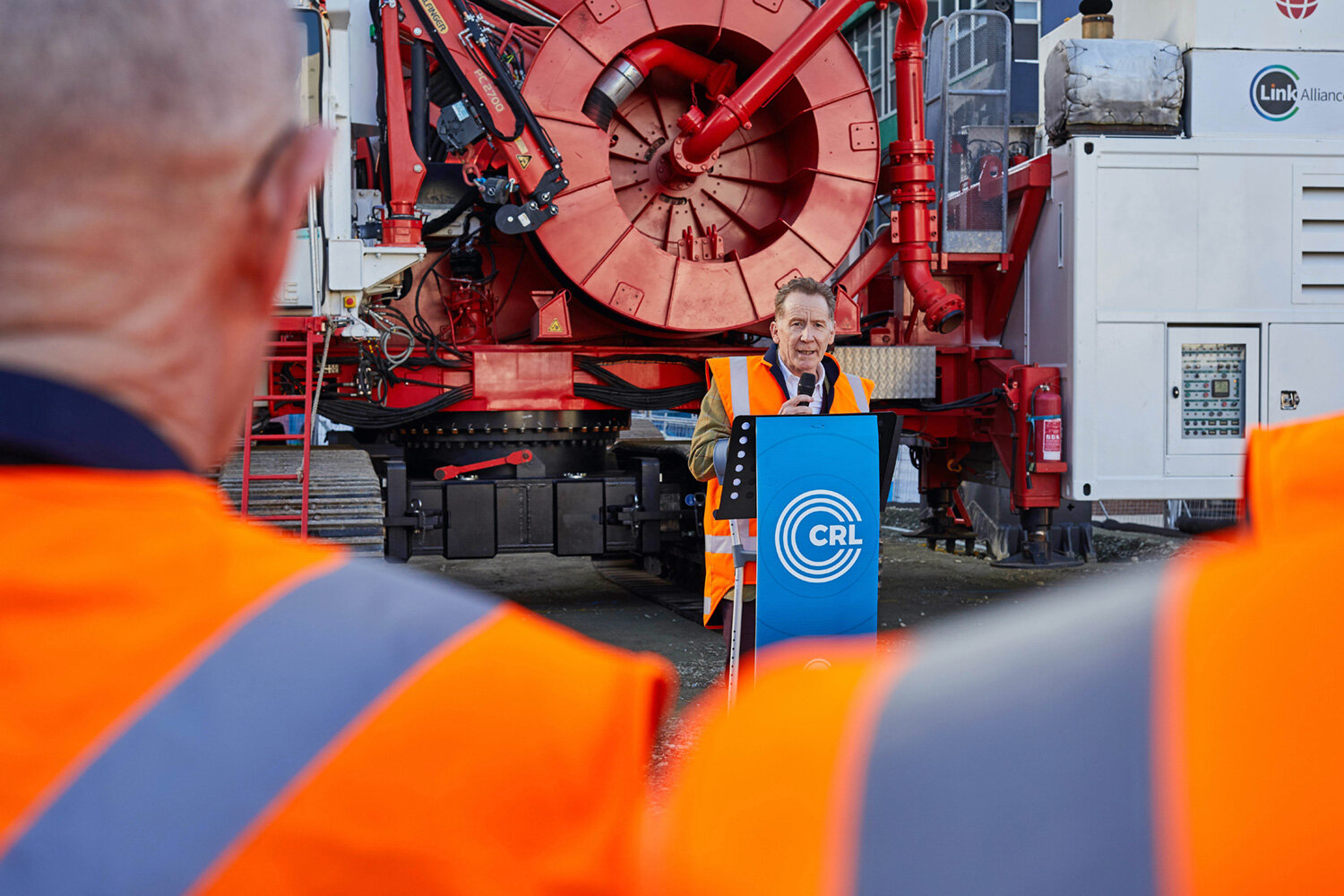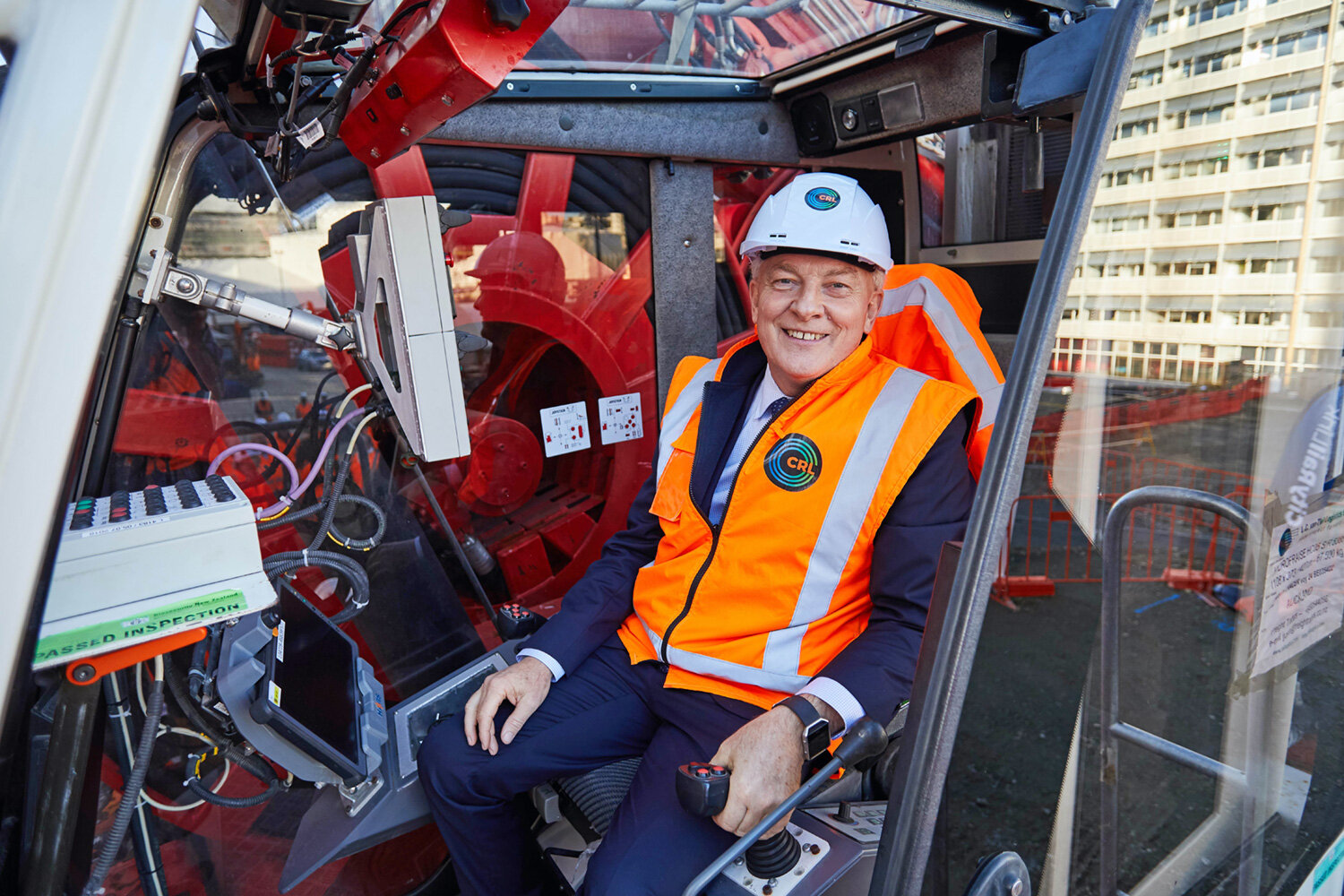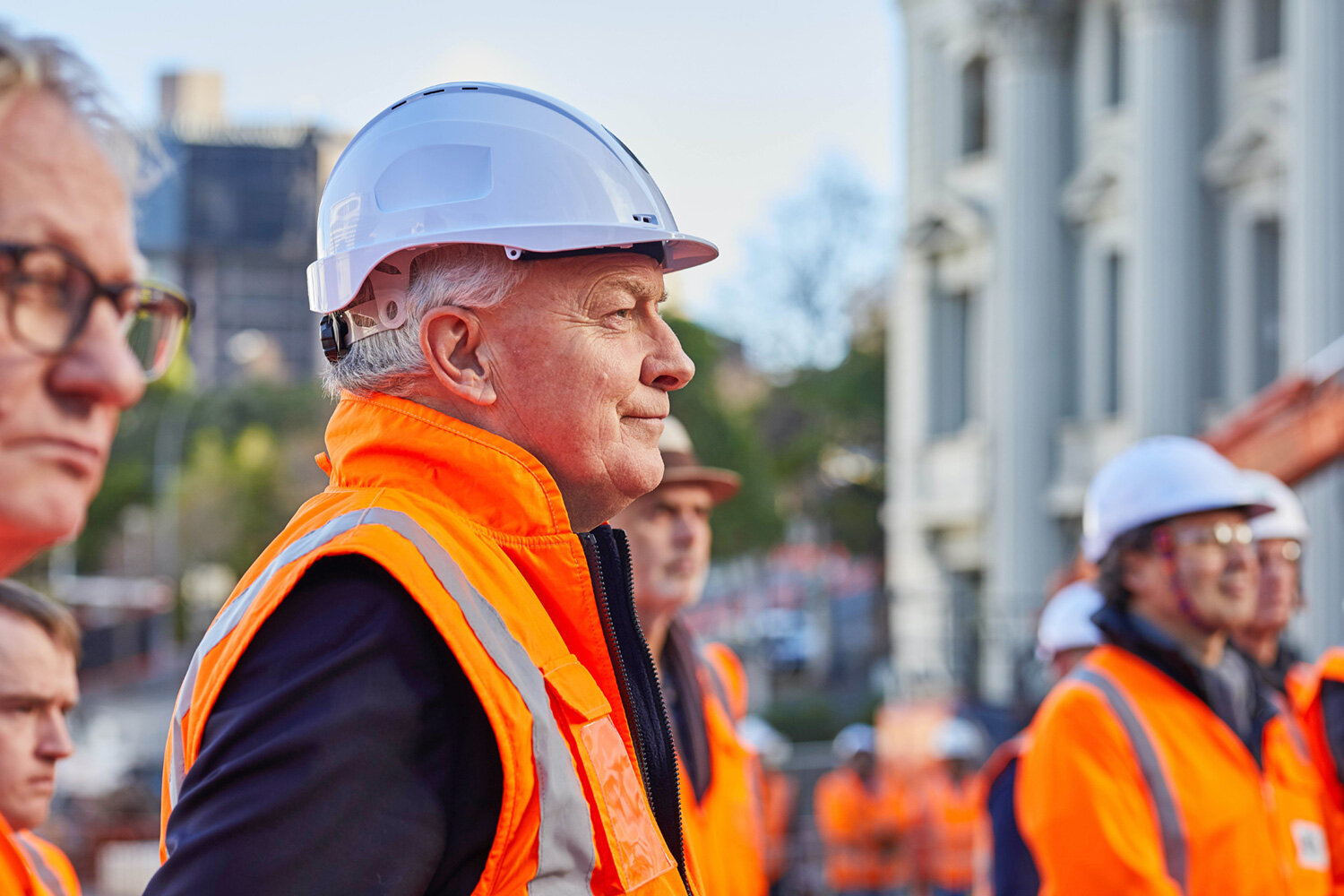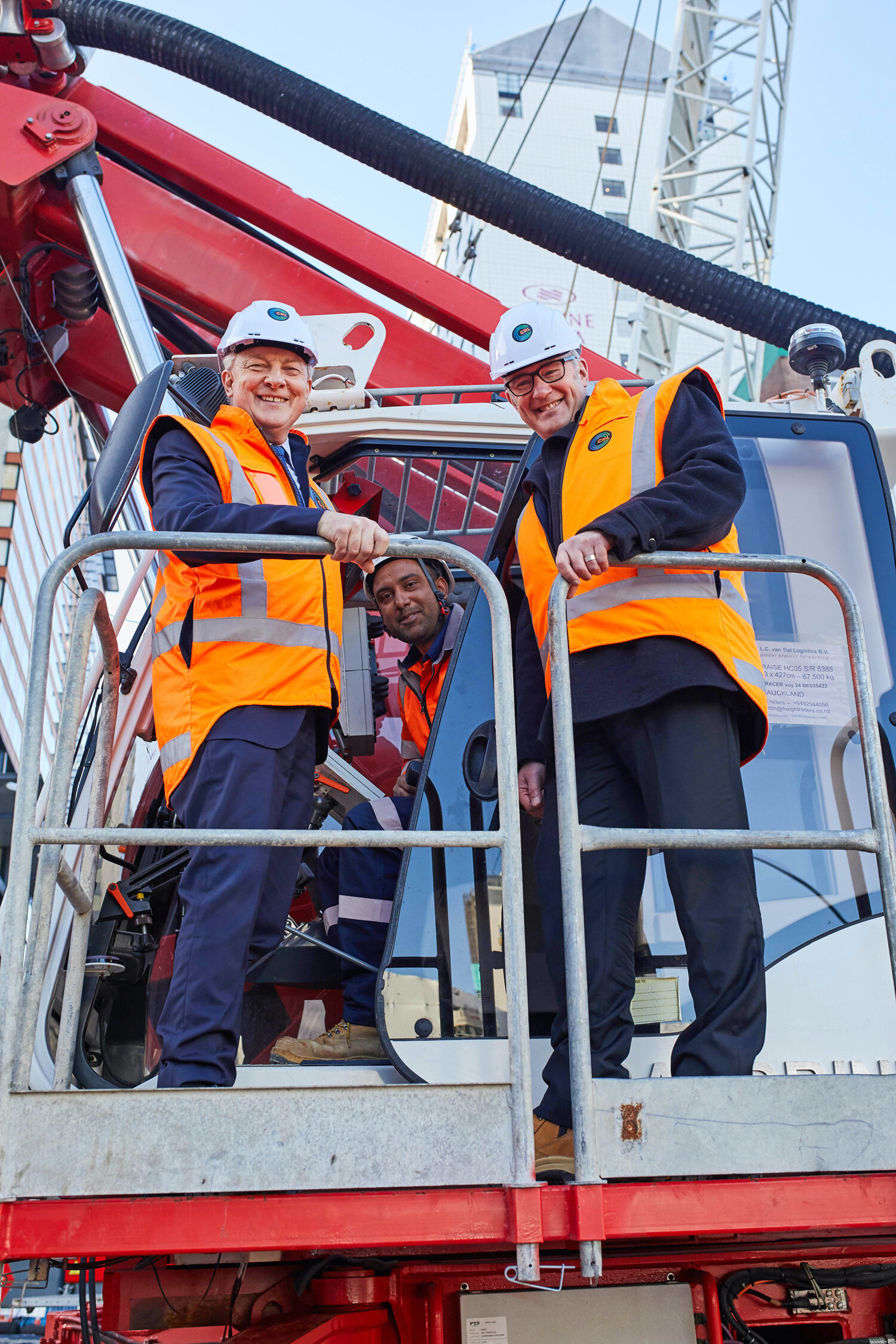Construction Kicks Off For New Zealand’s Largest Station
Construction of what will be the country’s busiest train station, Aotea, has formally begun this month with the help of a bright red ground cutting machine named Sandrine.
During a small ceremony on June 23, Transport Minister Phil Twyford and Auckland Mayor Phil Goff fired up the cutting end of the 90-tonne hydrofraise machine - symbolically marking the start of permanent works to build the station’s walls and vertical support deep underground.
The first walls for the Aotea Station are being built outside the Auckland Council offices at the Wellesley Street/Albert Street/Mayoral Drive intersection. Mayor Goff said the station, which will be 15 metres deep and 300 metres long, will transform the city centre.
“When it opens, CRL will double the number of people able to travel into and through the city centre, carrying up to 54,000 people an hour during peak times,” Mr Goff said.
“The project will create a better Auckland, reducing traffic congestion and transforming our city centre into a vibrant place to spend time in.”
Aotea, which will connect with tunnels to the Britomart and Karangahape Stations, is being built by the Link Alliance as part of the project’s main stations and tunnels contract for City Rail Link Ltd.





How do we create walls and stations underground?
Sandrine’s twin rotating blades will cut narrow but very deep trenches in the ground. A clay slurry called bentonite will then be pumped into the trench to stop the sides collapsing inwards before the space can be filled with reinforced concrete.
These reinforced concrete walls are known as diaphragm or ‘D walls’ and will eventually support the station. Most of the station’s foundation walls will be D walls - in total, 152 panels will be installed up to 21 metres deep.
Aotea’s walls and roof are being constructed first and dirt will then be removed for the station platforms and concourse. Working top-down will reduce the impact of construction at street level.
Aotea’s hydrofraise is a CRL “veteran” and was used earlier on the CRL project inside and outside the Chief Post Office heritage building at Britomart in Lower Queen Street. The machine is named Sandrine in honour of a woman who has worked for a CRL contractor.
